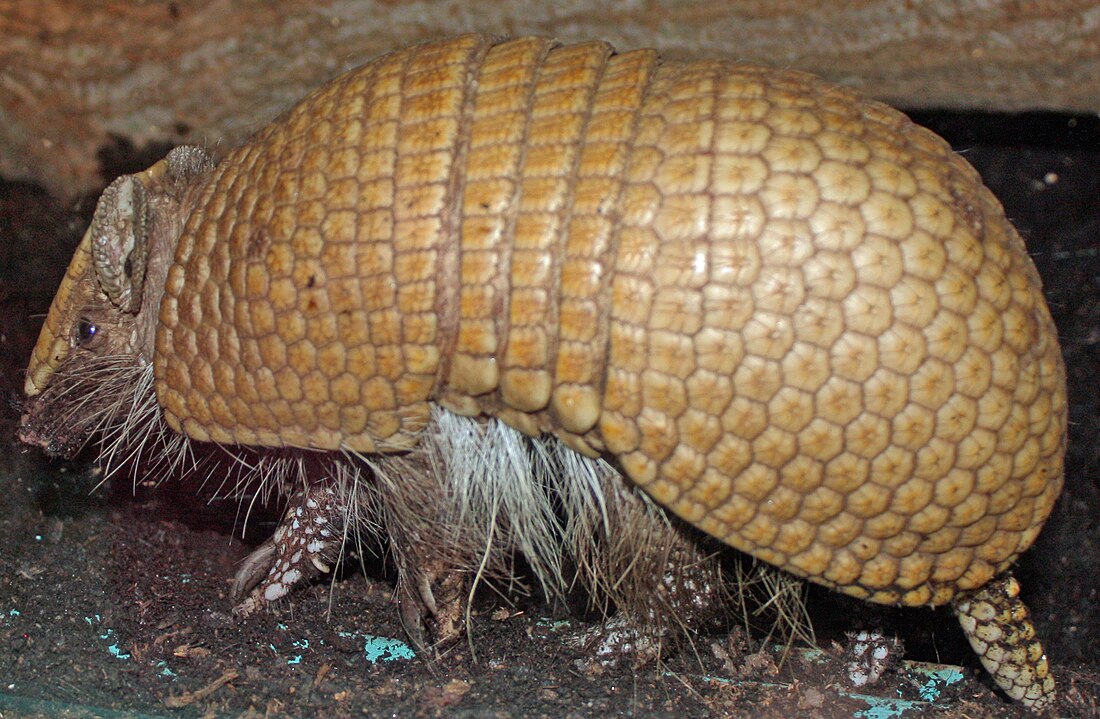Top Qs
Timeline
Chat
Perspective
Chlamyphoridae
Family of armadillos From Wikipedia, the free encyclopedia
Remove ads
Chlamyphoridae is a family of cingulate mammals. While glyptodonts have traditionally been considered stem-group cingulates outside the group that contains modern armadillos, there had been speculation that the extant family Dasypodidae could be paraphyletic based on morphological evidence.[1][2][3][4] In 2016, an analysis of Doedicurus mtDNA found it was, in fact, nested within the modern armadillos as the sister group of a clade consisting of Chlamyphorinae and Tolypeutinae.[5][6] For this reason, all extant armadillos but Dasypus were relocated to a new family. The scientific name comes from Ancient Greek χλαμύς (khlamús), "cloak", and φόρος (phóros), "bearing".[citation needed]

Remove ads
Classification
Below is a taxonomy of the extant species of armadillos in this family.
Family Chlamyphoridae
- Subfamily Chlamyphorinae
- Genus Calyptophractus
- Greater fairy armadillo, Calyptophractus retusus
- Genus Chlamyphorus
- Pink fairy armadillo, Chlamyphorus truncatus
- Genus Calyptophractus
- Subfamily Euphractinae
- Genus Euphractus
- Six-banded armadillo, Euphractus sexcinctus
- Genus Zaedyus
- Pichi, Zaedyus pichiy
- Genus Chaetophractus
- Screaming hairy armadillo, Chaetophractus vellerosus
- Big hairy armadillo, Chaetophractus villosus
- Andean hairy armadillo, Chaetophractus nationi
- Genus Euphractus
- Subfamily Tolypeutinae
- Genus Cabassous
- Greater naked-tailed armadillo, Cabassous tatouay
- Chacoan naked-tailed armadillo, Cabassous chacoensis
- Northern naked-tailed armadillo, Cabassous centralis
- Southern naked-tailed armadillo, Cabassous unicinctus
- Genus Priodontes
- Giant armadillo, Priodontes maximus
- Genus Tolypeutes
- Southern three-banded armadillo, Tolypeutes matacus
- Brazilian three-banded armadillo, Tolypeutes tricinctus
- Genus Cabassous
Remove ads
Phylogeny
Chlamyphoridae, like Dasypodidae, is a basal clade within Cingulata, as shown below.
| Cingulata cladogram[5][7][8] | |||||||||||||||||||||
|
Remove ads
References
Wikiwand - on
Seamless Wikipedia browsing. On steroids.
Remove ads



